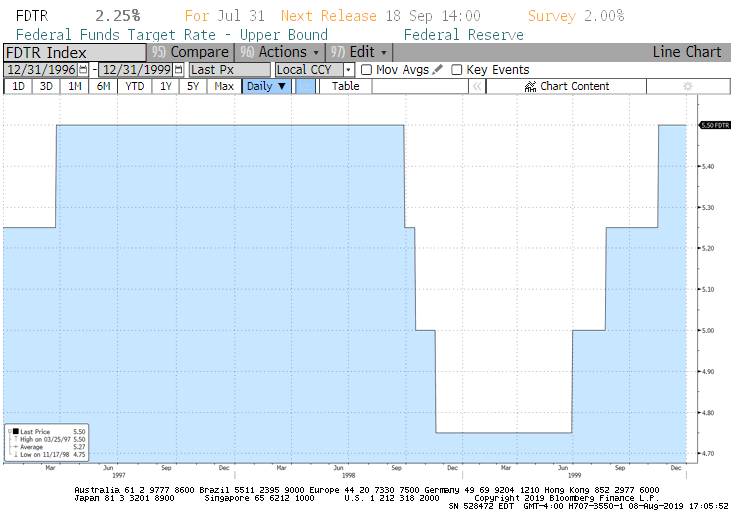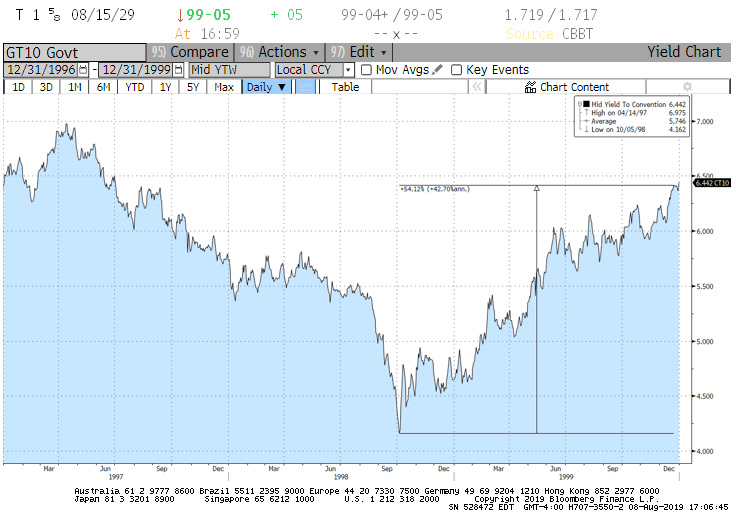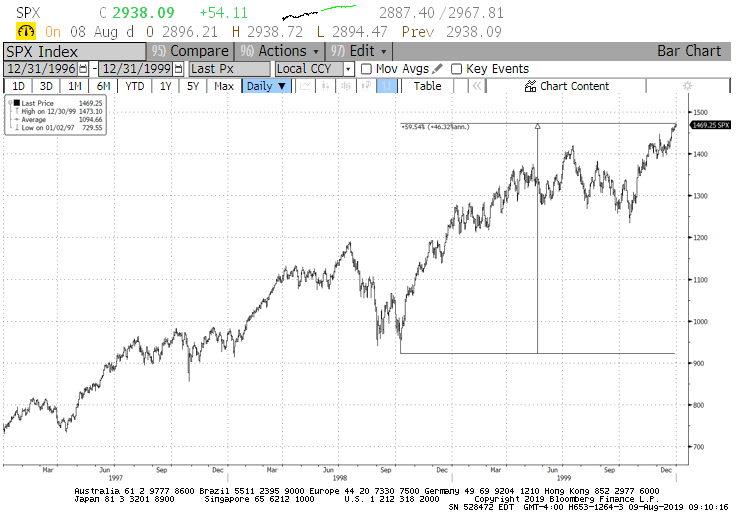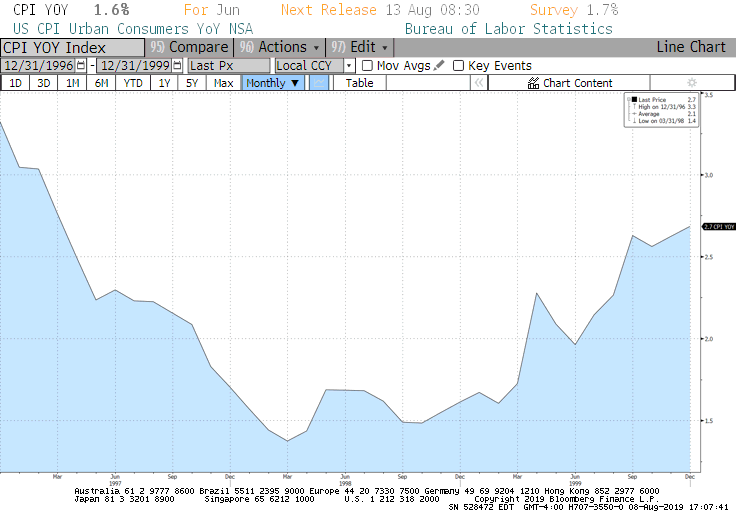Here is why 1998 is an important year to study as we think about the future direction of stocks, interest rates, and inflation:
Key takeaways: If 1998 is informative we believe the Fed will cut rates further, 10-year rates to go up sharply, inflation to accelerate, and an end of cycle bull move in stocks.
- The Fed began to cut rates in response to an emerging markets crisis (they cut rates 3 times), and fears the economy was slowing down. Equity market weakness in 1998 likely reinforced the Fed’s commitment to ease dramatically. Figure 1 shows that the Fed cut rates sharply in late 1998. The Fed began to raise rates again in late 1999 only after rates rose sharply, inflation rose sharply, and stocks rally sharply.
- While it might seem reasonable to think that drop in Fed Funds rate would lead to an overall drop in interest rates, longer maturity interest rates actually rose sharply in the months that followed. Figure 2 shows that yields on 10-year US Treasuries rose over 50% from the bottom of yields in late 1998 through the end of 1999. This was an increase in yields of well over 200 basis points. Interest rates rose as inflation expectations, inflation, and stocks rose in response to the Fed stimulus.
- Importantly, the sharpest rise in yields occurred while the Fed was easing and while it kept rates low. The rise in yields actually slowed down when the Fed began to increase rates again in late 1999 in response to rising inflation and a surging stock market. It is reasonable, using this historical analogy, to expect 10-year yields to rise meaningful until the Fed tightens again. A Fed tightening is not likely to occur any time soon.
- Figure 3 shows that the bull market of the 1990’s accelerated in the period 1998 through 1999. In fact, stocks rose more than 50% from their 1998 bottom through year-end 1999.
- Figure 4 shows the acceleration in CPI that occurred after the Fed rate cuts.
- During this period, a US President was under investigation and impeachment proceedings began. It was a time of corrosive politics and when the threat of war loomed large. In fact, during this period the US bombed Iraq, conducted an airstrike against Yugoslavia, and rattled the saber extensively. Some believed the bellicose foreign policy was intended as a distraction from the President’s problems.
Is this Chairman Powell’s playbook? We believe he must be aware of the 1998 analogy and given his fears of further disinflation, will use the Fed’s powers to drive inflation higher. With the unemployment rate near historic lows, his best hope is wage push inflation, and letting the economy run at a hotter pace. Easing should weaken the dollar and this too would be inflationary.
Figure 1: Federal Funds Rate 1996-1999

Source: Bloomberg accessed 8/9/19.
Figure 2: 10 Year Treasury 1996-1999

Source: Bloomberg accessed 8/9/19.
Figure 3: S&P 500 1996-1999

Source: Bloomberg accessed 8/9/19.
Figure 4: CPI Year Over Year 1996-1999

Source: Bloomberg accessed 8/9/19.
Jonathan E. Lewis
Chief Investment Officer













